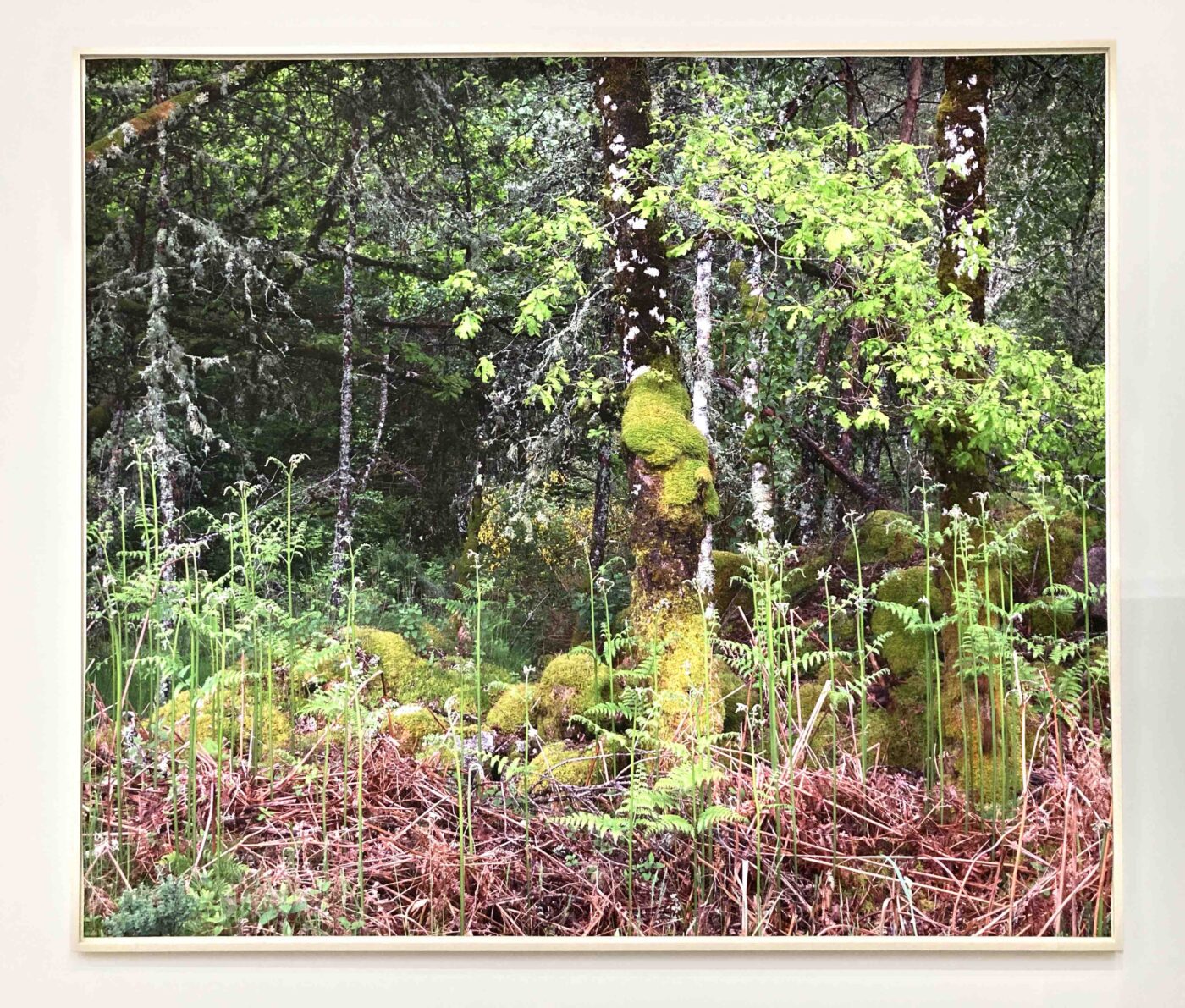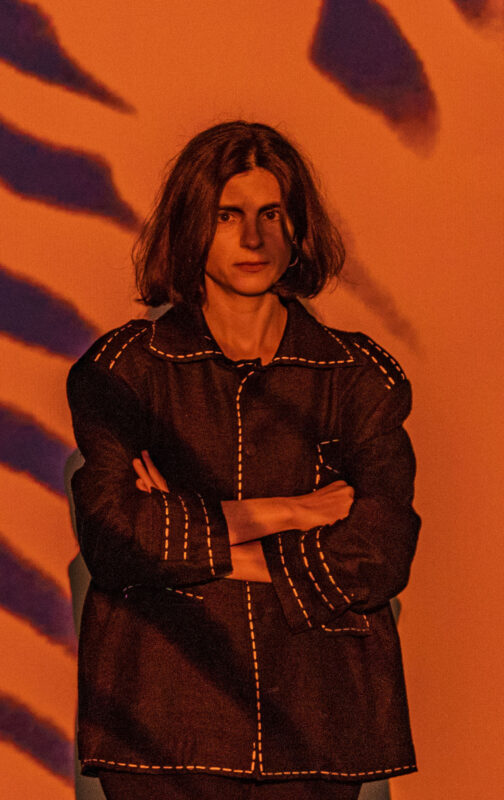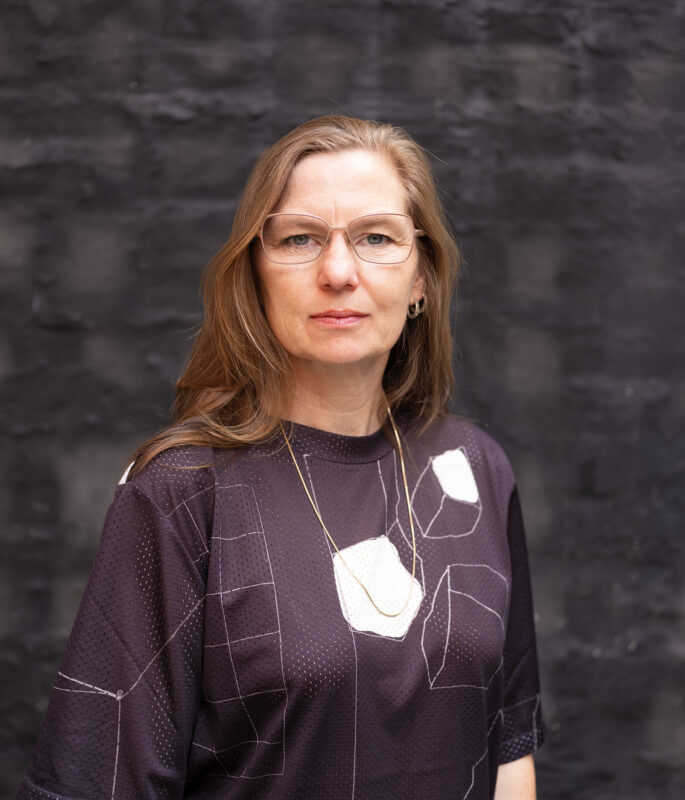 L’Age Atomique, Musée d’Art Moderne de Paris. © Susanne Kriemann
L’Age Atomique, Musée d’Art Moderne de Paris. © Susanne Kriemann The Radioactive Afterlife of Limousin’s Landscape - Artist Talk by Susanne Kriemann
“My photographs are not just what I look at, but something that looks back”, artist Susanne Kriemann describes the thinking that frames her practice as an artistic researcher. On 26 November 2024, Kriemann presented her most recent photographic work titled Lupin, Fougère, Genêt in the form of a lecture at Framer Framed. The event was organised by the curator and researcher Kyveli Mavrokordopoulou. As a participant in the project, her introductory talk provided valuable insights into fieldwork, the effects of uranium contamination on landscapes, and the growing presence of radioactivity in our everyday environments.
Text by Baši Bučková
29 November 2024
In Lupin, Fougère, Genêt, the artist investigates the aftermath of uranium mining in the Limousin region in France. Nuclear landscapes and the radioactive memory of plants are central to her practice, as her previous works such as Pechblende make clear. Kriemann’s long-term artistic research project Pechblende (uraninite in translation), investigates the entangled histories of photography, uranium extraction, and slow violence towards the landscape in regions of East Germany that supplied the Soviet nuclear program (1946-1991). The project consists of archival objects, dyed fabrics and autoradiographs – camera-less exposures that result in an identical, but abstract image – of contaminated flora from the landscape, visualising what is invisible but acutely there: radiation (Kriemann, Pechblende).
Kriemann takes a similar approach with Lupin, Fougère, Genêt, which builds upon Pechblende. The newly commissioned work, created for the exhibition L’ Age Atomique (2024) at Musée d’Art Moderne de Paris, follows her exploration of the nuclear landscape in Limousin, a French region that had been significant for uranium extraction until 2006 (Dixit). Former uranium mines were flooded in an attempt at environmental remediation, creating several artificial lakes, which became the primary focus of the artist. Despite the contamination of the (past) lakes and their surroundings, ecosystems grew and attracted non-human life to set down its roots. Kriemann paints the image of the Limousin landscape as lush, beautiful, incredibly humid, and hard to reach. Layers of vegetation in various life stages grow around the bodies of water, holding invisible and irreversible histories of uranium extraction and soil contamination. While the plants can withstand the radioactive contaminants and even flourish, they also stand as living reminders of the toxicity that uranium mining brought to the ecosystem.
As the title of the project suggests, Kriemann focuses on three plants from the region, which she foraged from the areas surrounding the lakes: lupine, fern, and broom plant. After uprooting the plants, the artist describes the time-sensitive nature of working with living matter: rushing to her hotel, she quickly puts them on a photographic paper layed down on a table and illuminates them with a smartphone flash. To print the images, the same plants from the region are used as a basis for the pigment: therefore, the result is not just a representation of the landscape, but the landscape itself, looking back. Lupine, fern, and broom plants are not only depicted, but more importantly, they are also actors participating in the depicting. Kriemann emphasises that such “looking back” of the photograph is a crucial element of her work. She builds her practice on collaboration, working with human actors such as scientists, researchers, or archivists, as well as non-human actors present in the field, thereby destabilising the anthropocentrism of “human-made” nuclear landscapes and their documentation.
The autoradiographs of Limousin’s vegetation show up as, in Kriemann’s words, bone-like elements to the landscape. She shares an anecdote about working with a hospital and waiting alongside other patients, feeling conflicted, just to have the collected plants x-rayed. What emerged from the scans was the anatomy of a heavy metal-coated landscape skeleton in the midst of its nuclear afterlife. Invisible to the naked eye, the autoradiographs make the landscape’s contamination tangible. In the words of the environmental scholar Siobhan Angus, who writes about Kriemann’s Pechblende: “While the mushroom cloud is the visual icon of atomic vulture, the autoradiograph is its material trace. The camera-less photographs make visible a type of disaster that often eludes vision. The release of invisible radioactive isotypes into the surrounding ecosystems polluted water, soil, and air, contaminating bodies and landscapes. On the photographic surface, these traces become visible” (113). Kriemann’s skeletal images showcase the nuclear history of the Limousin landscape, buried under new plant life and the promises of remediation.
While the photographs showcase the material effect of contamination, they do not capture the slowness of nuclear violence, Kriemann exclaims. Prompted by the curious audience, she points out the entanglement of different temporalities at work while making a project like Lupin, Fougère, Genêt. The prints, most notably, showcase the cyclical, seasonal life of plants next to the duration of uranium, which is roughly 4.5 billion years. Similarly, Kriemann points out, that the artworks’ pigments made from the materials from the landscape fade over time due to their non-synthetic nature. In this way, plants and plant-made pigments act as short-lived archives of radiation: however, even after they fade, the nuclear traces persist, even if invisible to the eye. These vastly differing temporalities speak of what environmental scholar Rob Nixon famously terms “slow violence”. Narratives of nuclear catastrophe more often than not warn against a singular potential catastrophic event. However, the damage that is overlooked “occurs gradually and out of sight, a violence of delayed destruction that is dispersed across time and space, an attritional violence that is typically not viewed as violence at all” (Nixon 2).
While photography as a medium, documenting a moment in time, fails to capture the ‘slow violence’ such as one of the long-term accumulation of nuclear waste, Kriemann explains that her projects explore and experiment with bridging the temporal gap between photography and uranium contamination. With plants and uranium as both the actors and the depicted or archival objects, she exposes the complex entanglements of the human and the nonhuman, alongside the different timelines at play – the slow violence of uranium poisoning and the continuously growing and dying vegetation of Limousin. As the artist describes it, with past works and the current project exhibited at the L’ Age Atomique, she attempts to create a “library for radioactive afterlife” (Kriemann, Pechblende). The images of Limousin vegetation represent the legacy of ecological exploitation and environmental destruction resulting from uranium mining, but they are also reminders of the invisible presence of radiation all around us. Kriemann critically speaks of nuclear waste that is hidden away and with it the reminder of how much of it has accumulated throughout the decades of capitalist conquest for resources. While wishing to make at least a trace of that waste visible in her work, Kriemann reminds us that landscapes remember histories – ones that are not always obvious to us, but we are surrounded by.
Text by Baši Bučková
Works Cited
Angus, Siobhan, “Atomic Ecology”, October Magazine, no. 179, pp. 110–131.
“Artist Talk by Susanne Kriemann: Lupin, Fougère, Genêt“, Framer Framed, 16 Nov. 2024,
framerframed.nl/en/projecten/artist-talk-door-susanne-kriemann-lupin-fougere-genet.
Dixit, Aabha, “From Uranium Mine to Fishing Lake: Environmental Remediation in France’s Limousin Region.” IAEA, International Atomic Energy Agency, 24 May 2016, www.iaea.org/newscenter/news/from-uranium-mine-to-fishing-lake-environmental-remediation-in-frances-limousin-region.
Kriemann, Susanne, “Lupin, Fougére, Genêt”. Susanne Kriemann, susannekriemann.info/lupin-fougere-genet/. Accessed 3 Dec. 2024.
Kriemann, Susanne, “Pechblende (Prologue)”. Susanne Kriemann, susannekriemann.info/pechblende. Accessed 3 Dec. 2024.
“Kyveli Mavrokordopoulou” Framer Framed, framerframed.nl/en/mensen/kyveli-mavrokordopoulou/. Accessed 3 Dec. 2024.
Nixon, Rob, Slow Violence and the Environmentalism of the Poor, Harvard University Press, 2013.
The talk was part of, and supported by, the Environmental Humanities Centre at Vrije Universiteit Amsterdam. The event was presented in partnership with Sonic Acts.
- Sonic Acts - Amsterdam
- Persoonlijke website van Susanne Kriemann
- VU - Environmental Humanities Center Amsterdam
Links
Fotografie / Artist Talk / Ecologie / Extractivisme /
Agenda
Artist Talk door Susanne Kriemann: Lupin, fougère, genêt
Presentatie over artistiek onderzoek naar de effecten van uraniummijnbouw.
Netwerk

Kyveli Mavrokordopoulou
Curator
